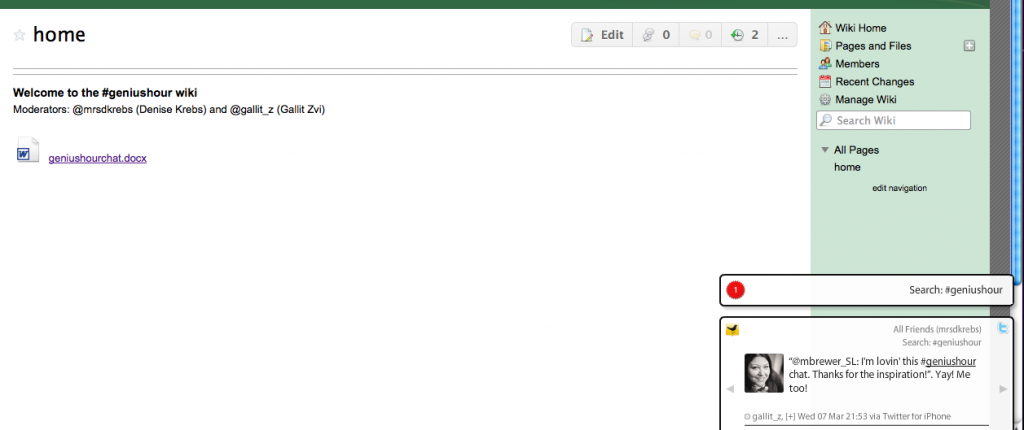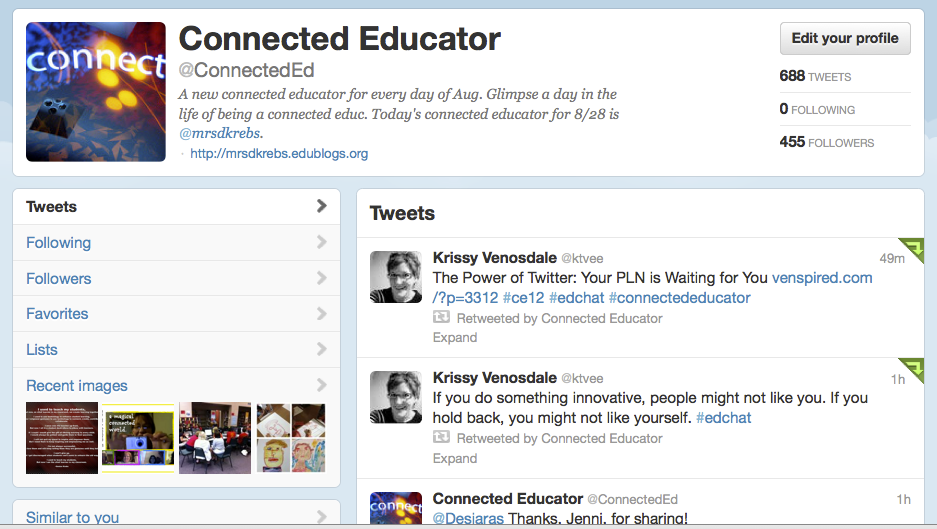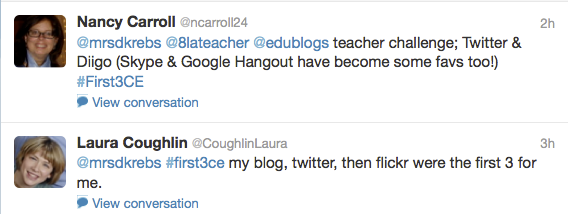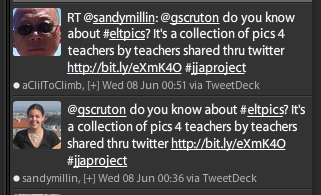What a wonderful surprise I got from Gallit Zvi when she asked me to co-moderate a Twitter chat about #geniushour. We have both experienced this transformational approach to learning with our students, so we were excited to see if others wanted to talk about their experiences or had questions about genius hour.
We chose a day–March 7, the first Wednesday of the month–and a time–6 p.m. Pacific Time and 8 p.m. Central Time, Gallit’s and my timezone, respectively. Then we advertised a bit, and waited for the time to roll around.


We wondered if anyone but us would come.

We sat for a minute or two and wondered some more. Hugh, a committed genius hour teacher, wasn’t able to be there, but he had submitted his thoughts about genius hour an hour or two before the chat. It was nice to have something to get us started.

Then, we were pleasantly surprised to find that others DID come, passionate educators who are committed to student-centered constructivist learning. (Here is a Twitter List of participants in the first #geniushour chat.)
A few contributions from our first #geniushour chat:




Gallit created a #geniushour wiki for all of us to share information and archive our tweets.

Based on the feedback at the end of the chat, I think we all learned from and enjoyed it!



I enthusiastically learned and enjoyed. I had two significant takeaways, which will change the course of my school year.
- In my classes we will now be having genius hour once a week, quite possibly due to this question Gallit posed.

- I will let students continue working on projects until completed, as Joy does with her students. Instead of presenting after every genius hour, which has been my practice, now each person can determine when s/he is ready and present at that time (or once a month).

Simple ideas, but on my own thinking I had not figured these out. When I talked to others in this chat, I was challenged, inspired and empowered. My thoughts about this important idea were strengthened. If you want to read more of the tweets from our first chat, visit GeniusHour.Wikispaces.com for the archive.
My students are happy I participated in #geniushour chat because coming up next Monday is our first weekly genius hour!
I’m already looking forward to the next #geniushour chat on April 4 at 9:00 pm ET. Who knows what I’ll take away from that one? I hope you will join us!



























